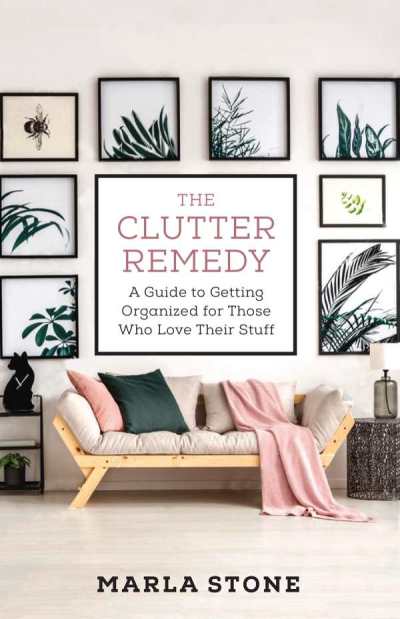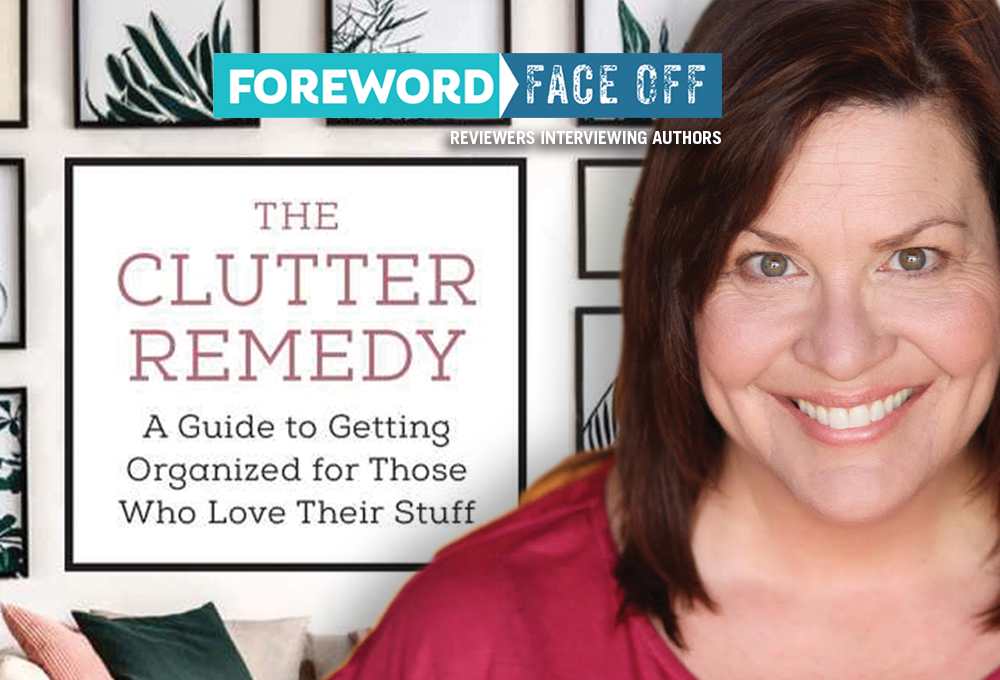Reviewer Meg Nola interviews Marla Stone, author of The Clutter Remedy
What the world doesn’t need is more back cover copy. We’re reminded of this fact every so often when a new book comes along with a title so explicit, so wonderfully self actualized that anything more would be superfluous.
So thank you, Marla Stone and New World Library, for the exquisitely titled The Clutter Remedy: A Guide to Getting Organized for Those Who Love Their Stuff. Indeed, we’ll follow your lead and cut right to mentioning Meg Nola’s praiseful review of The Clutter Remedy in the January/February issue of Foreword Reviews before launching this interview.
Take it from here, Meg.
With the beginning of both a new year and new decade, it seems like people might be making resolutions to live with less clutter. Oftentimes, however, January’s fresh start becomes bogged down by the demands of work, family, and general day to day issues. What first steps would you suggest to actually make no-clutter resolutions stick?
The first step to create no-clutter resolutions is to understand what your ideal lifestyle truly is about and also to declutter your emotions and any wounds or traumas you’ve stored, forgotten about, or ignored. It’s difficult to move forward with new behaviors and experiences and to look through belongings when you don’t know what your current lifestyle is and when negative emotions are blocking you from seeing you, your life, and your stuff clearly.
In The Clutter Remedy, you include “secret” clutter people, who can’t entertain or fully enjoy life because of the excess and disorganization in their homes. In a way, coming to terms with a serious clutter problem seems like acknowledging an addiction. What’s your best advice for someone who lives with that secrecy, and who feels like their clutter is too out of control to be managed?
When there are more serious over-collecting and over-accumulation challenges, it’s important to understand the history of one’s life and to get a clear picture of dreams and goals. When a person has nice life dreams and goals it is easier to allow the process of organizing and decluttering to begin and finish. Understanding that impeding language can hinder any project or outcome and recognizing things aren’t “needs,” but rather “wants or don’t wants,” and being decisive about what to keep using a four part criteria is always helpful. The Clutter Remedy’s clear and concise criteria is: Will you use it? Does it serve a purpose? Is it sentimental and do you love it?
Also acknowledging mental and or physical health challenges, grief and loss, and any barriers to accepting support and advocacy is very helpful for accomplishing the decluttering project. The most important thing to consider when there is an overabundance of stuff is NOT focusing on getting rid of anything. Instead, focus on getting everything you own categorized, fine tuned, contained, and placed in the proper home, based on how often you use each category. The goal is to return the home to a beautiful and functional space as fast as possible so the floors, surfaces, and furniture become clear of clutter and company and creativity can take over.
There’s a couple featured in the book who unfortunately ended up divorcing because the wife could not stop certain compulsive hoarding behaviors. Though that was an extreme case, partners can become aggravated by either too little or too much attention to clutter. How can couples find workable solutions to living together amid their separate and shared possessions?
Having everyone responsible for their own belongings and agreeing how the home will be set up is the first step to living respectfully in shared space. Using assertive communication language rather than aggressive, passive aggressive, or passive communication is key for couples sharing space. Sharing negative feelings and then validating the other person and a “no blame policy” is best in order to clearly communicate each person’s inner experience.
When one person is overcollecting in a shared space and it’s impinging on the other person, set guidelines or rules for the shared space. When the rules are broken have consequences set up and agreed upon ahead of time. Consequences can be “take-aways,” meaning items left around will be removed and stored away for a certain amount of time. This gives the messy person time to process the loss of their items and to recognize there will be items unavailable to them for a period of time, due to leaving things around. More serious consequences can be that the inconvenienced person leaves the situation until the home is remedied by the clutterer. When there is an impending separation or divorce, couples therapy or coaching can be beneficial in order to have an objective opinion.
The Clutter Remedy has a wonderfully holistic and healing tone, along with your underlying guidance of taking an appropriate pace—because, as you note, “When you push, you fall.” You advocate working carefully to discover the personal and psychological reasons behind clutter accumulation, as well as making changes in speech, diet, decor, and other lifestyle habits. How would you deal with someone who insists that their home just needs a good “spring cleaning,” and who is resistant to this deeper introspection?
The deeper introspection prior to decluttering helps clutter from coming back over and over again. Using techniques to clear negative emotions, heal trauma, and figuring out what you love to do in life spurs on enthusiasm about having a clutter free, functional, and well designed space. Having a beautiful space then spurs on wanting the space to stay that way. As well, understanding what disruptive behaviors or situations cause barriers to remaining organized will help prevent re-cluttering and is essential for living a perpetually organized life. Quick fixes or clean ups and solely making things neat does not assure a perpetually disorganized person will remain organized permanently.
Do you find that there can be a negative stereotype of “neat freak” people, like they’re sometimes regarded as controlling and less spontaneous than disorganized folks? And in that vein, do you encounter pushback from those who hold onto possessions for sentimental or romantic reasons, and who protest that to even think of donating or discarding such items shows a lack of caring or emotion?
I have zero judgment or concern about what anyone keeps or discards. My job as the clutter remedy expert is to do my job, which is categorizing, fine tuning, and containing belongings, plus furniture placement and space planning, designing, decorating, and finding the exact perfect place to put everything. Using the clear and concise criteria and respecting decisions made by the person who owns and loves their stuff helps make the decluttering process drama and regret free.
What ultimately made you shift from social work and psychotherapy to clutter counseling, and what’s the most satisfying aspect of your clutter therapy practice?
I’m a former social worker and psychotherapist of seventeen years. The ultimate decision for reinventing myself was that I didn’t want to sit anymore and wanted to do more in life. I helped thousands of people recreate themselves as a therapist and I wanted to see what MY ideal lifestyle was before I turned fifty. When I found professional organizing as a profession it was like a dream come true. I still get to help people, standing up instead of sitting, and I get to decorate and do lifestyle coaching assisting people to heal, grow, and blossom. I love what I do, I love the people I work with, and I love helping others not only reshape their space but also their lives.
Meg Nola

